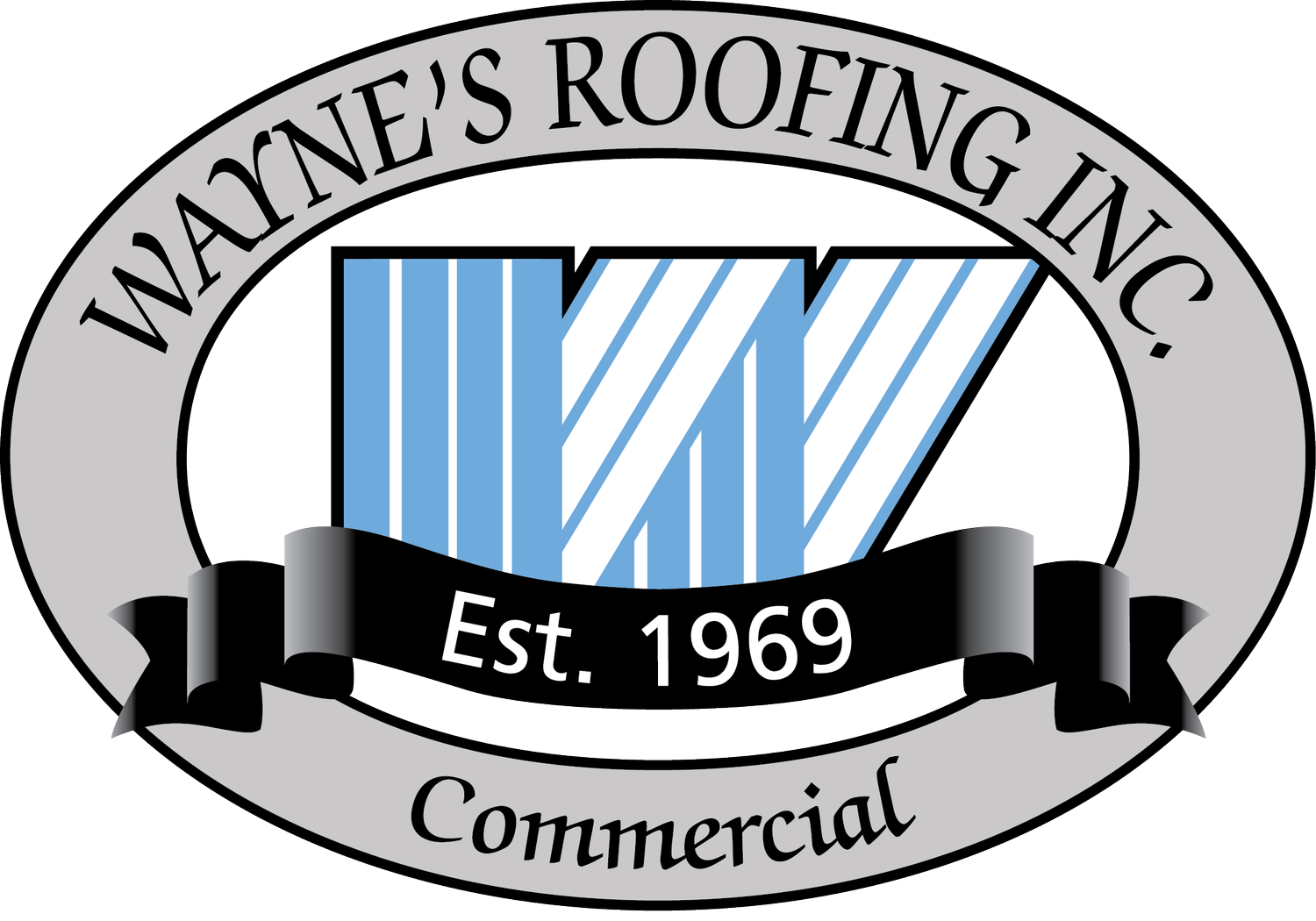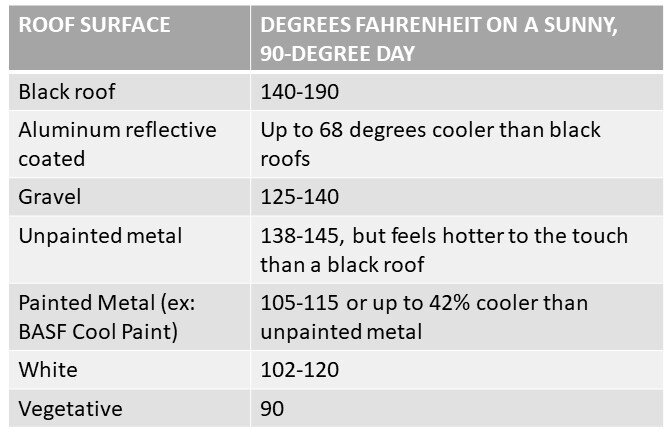How Hot Does Your Commercial Roof Really Get In the Summer?
Walking across a blacktop parking lot on a sunny day can feel like the temperature just went up 20 degrees, because surface material has a lot to do with temperature. If you move from the blacktop to the grass and you can instantly feel the difference.
It’s the same with roofs. Dark roofs absorb light — up to 90% of solar energy — and convert it to heat, emitting it back into the atmosphere. White ones absorb less light by reflecting the light without transferring it into heat.
Green roofs, on the other hand, absorb sunlight and even put it to good use.
Here’s the kind of temperatures you can expect your roof to reach this summer depending on its surface:
Note: Different sources report different temperatures.
The rooftop temperatures are the result of two different properties. The ability of the material to reflect the sun’s energy back into the atmosphere, called solar reflectance, and the amount of heat the material rejects instead of absorbs, called thermal emittance. Both are measured on a scale from 0 to 1 with higher scores translating into cooler roofs.
The differences between rooftops
Black roofs get the hottest. While most are designed to last 20 years or longer, black roofs can suffer because heat speeds up the breakdown of materials — in fact, heat wear and tear is the main issue from a longevity standpoint. This is especially pronounced in aging roofs.
Metal roofs also get hot. Which is why metal roofing is typically coated with paint as part of the manufacturing process — it helps cut down on the surface heat. The roof can be painted after it’s installed but installing it pre-painted is best.
White roofs can be 50 or more degrees cooler than black roofs and almost 30 degrees cooler than gravel roofs. Coated roofs, either aluminum or elastomeric, are also cooler than black roofs — technology also makes it possible for you to choose designer Pantone colors and still reduce your roof temperatures significantly. And nothing beats a living, breathing cooling machine for keeping your rooftop at a pleasant temperature. If a hot roof is a concern, you might want to consider a vegetative roof.
Why vegetative roofs are so cool
The temperature of a vegetative roof at its surface is cool to the touch on most days — it is in total shade, with a conventional roof surface protected under a dense canopy of vegetation. The cooling qualities go beyond the individual rooftop, as vegetative roofs also reduce the heat that is reflected back into the atmosphere.
Effects on the temperature inside your building
Does a hotter roof make for a hotter interior? Absolutely. Heat can be absorbed by your roof surface and radiated inside, especially in buildings with older roofs that were not assembled using R20 and R30 insulation. Newer insulations do a better job than even just a few years ago. If you choose a nice white or silver coating, you can reduce heat radiation enough to size your AC requirements differently. Which in turn reduces your energy costs and the demands on the power grid that contribute to energy pricing.
The Green Building Alliance reports that cool roofing can result in energy savings ranging from 7%-15% of your total cooling costs.
Keep in mind that to get the greatest benefit from your painted or coated roof, you need to keep it as clean as possible and repaint every 10-15 years.
Should you change your roof to keep it cooler?
How hot your roof really gets in the summer is a variable you have some control over. It is definitely something to consider when re-roofing and in a new construction project, and you might be able to take steps to cool things down on the roof you already have. Plus, new coating technologies are being developed all the time.
Our team at Wayne’s Roofing, Inc., can advise you on your best options for your particular roof that will also align with your long-range goals for your building — Give us a call.

